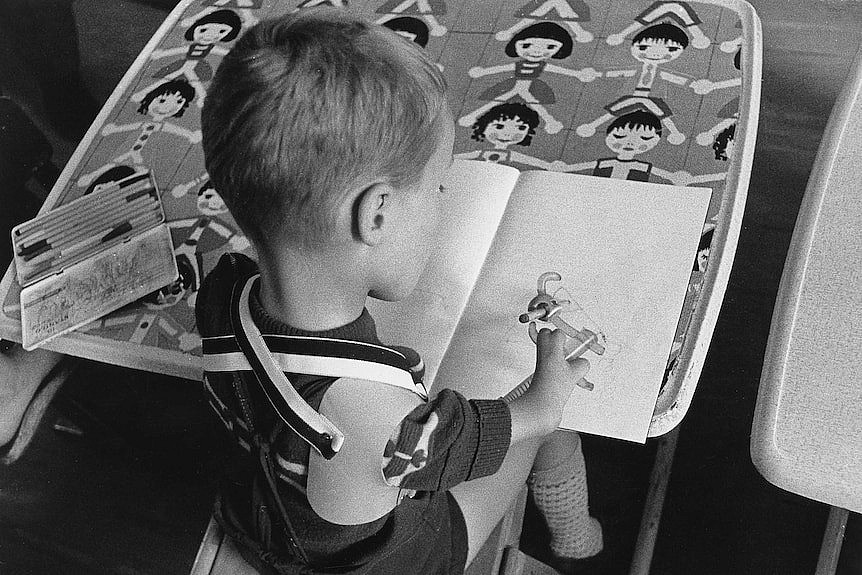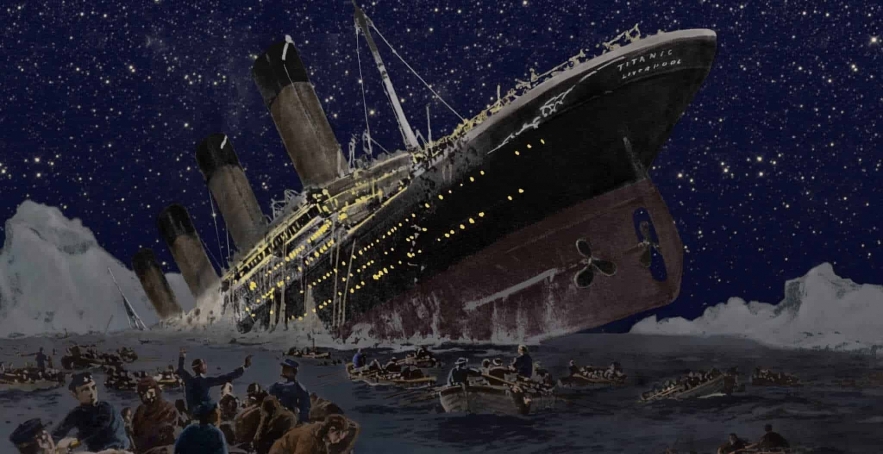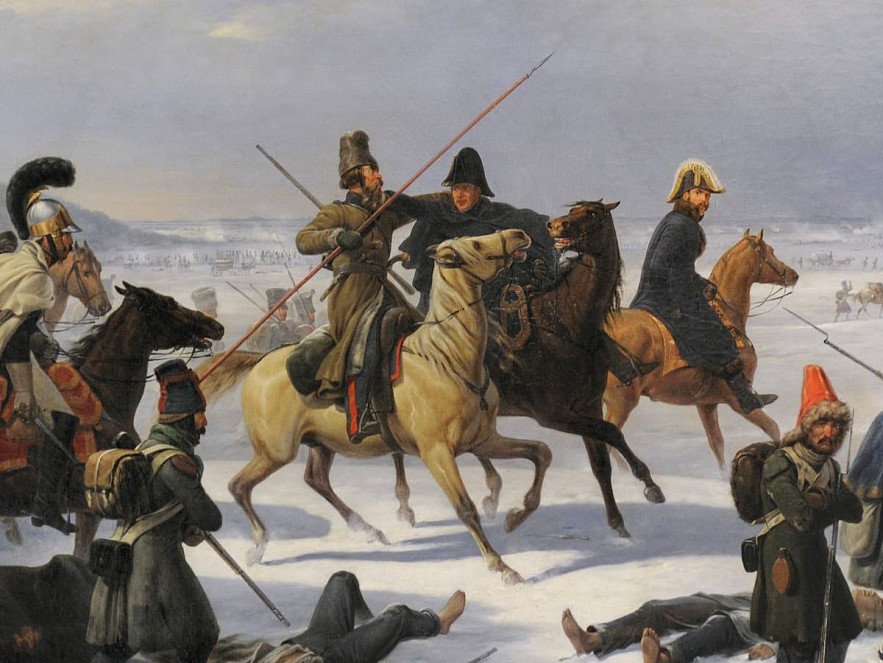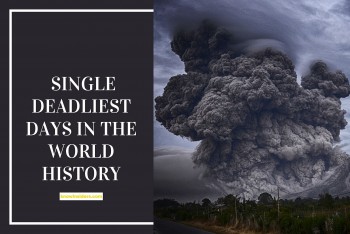Top 13 Worst Decisions That People Made In History
 |
| Top 13 Worst Decisions That People Made In History. Photo KnowInsiders |
| Contents |
Choices made by individuals can sometimes have huge impacts and end up causing a lot of chaos and destruction. Whenever someone decides to do something, they never make a big deal out of it and they often don't even think twice before going through with it, and that's when something huge ends up happening.
Many people in history single handedly created major problems that ended up affecting the world for years, which shows how dangerous it is to rush your decisions without thinking them through. Choices have consequences, so they should never be taken lightly.
Top 13 Worst Decisions That People Made In History
1. Mars Turning Down the Chance to be in 'E.T.'
"Is he a pig? He sure eats like one," quipped Gertie when she first laid eyes on the small brown alien, E.T., in Steven Spielberg's 1982 blockbuster movie. E.T. may have had a sweet tooth, but those brown, orange and yellow candies he was snacking on weren't M&Ms.
It could have been M&Ms, but Mars passed on the chance to use their candy in "E.T., the Extra-Terrestrial" when Spielberg asked. Instead, Hershey smartly stepped in with Reese's Pieces when opportunity knocked. The good fortune for knowing when to say yes? Sales of Reese's Pieces jumped 65 percent in June 1982, the same month E.T. was released
2. Decca Records Declining to Sign the Beatles
On New Year’s Day, 1962, Brian Epstein, the manager of an unheralded musical group, took his young talents to audition with Decca Records at their studios in West Hampstead, North London. After setting up, tuning and stringing their guitars, and clearing their throats, Epstein’s group performed about 15 songs before Dick Rowe, a senior Decca executive and the record label’s chief talent spotter. After the audition, Mr. Rowe decided to pass on signing the group, with the airy remark that “Guitar groups are on the way out, Mister Epstein“.
Epstein and his group left Decca’s studios, understandably dejected at starting the new year with a rejection. Not so Dick Rowe, who figured that his new year had started auspiciously. That same day, he had listened to another auditioning band and liking what he heard, he signed up Brian Poole and the Tremeloes to a deal with Decca Records.
All in all, signing the Tremeloes was not a bad decision in itself, as the band had some success in the United Kingdom. In 1963, they entered the UK charts with a cover of the Isley Brothers’ Twist and Shout, and followed it up with a UK chart-topping cover of the Contours’ Do You Love Me. A year later, they did a cover of Roy Orbison’s Candy Man that pleased the Brits, and a cover of the Crickets’ Someone, Someone, which made it to number 2 on the UK charts.
The bad decision was rejecting and declining to sign the other band that had auditioned the same day as the Tremeloes: The Silver Beatles, soon to shorten their name to The Beatles. The decision to pass on The Beatles in favor of Brian Rowe and the Tremeloes would make Dick Rowe and Decca Records synonymous with bad decisions and catastrophic commercial misjudgments.
3. Thalidomide's Use as a Morning Sickness Treatment
 |
| Photo ABC |
Thalidomide was a widely used drug in the late 1950s and early 1960s for the treatment of nausea in pregnant women. It became apparent in the 1960s that thalidomide treatment resulted in severe birth defects in thousands of children. By 1961, though, negative effects of the drug were becoming evident -- babies were born with severe deformities. Affected babies were often born with shortened arms or legs and with flipper-like hands and feet (a condition called phocomelia); some babies were born with other defects such as malformed eyes, ears, hearts and other organs. By the time the manufacturer finally pulled the drug, an estimated 100,000 pregnant women had taken it, and an estimated 40 percent of babies exposed to the drug died (either during the pregnancy or shortly after birth)
4. The Titanic's Many Bad Choices
 |
| Photo history |
The most discussed naval accident of modern times is now more than a century old.
One thing that cannot be debated is that the Titanic tragedy of April 1912 resulted from a whole series of bad choices. Many have been well documented.
Some of these were:
1. The design of the hull expansion joints was a true design flaw on Titanic. They were corrected on the Britannic, the third ship constructed (this has been confirmed by recent explorations of both wrecks).
2. The watertight compartments were open at the top and the walls did not reach high enough to prevent water from cascading from one compartment to another as in a giant “ice-cube tray.”
3. The rudder was far too small for a ship that size.
4. A final engineering choice that slowed the ship’s ability to turn was that when the engines were reversed, the third screw, the one directly behind the rudder, stopped turning (as it was driven by a steam turbine fed by the exhausts of the outboard piston engines).
5. Filling the Hindenburg With Hydrogen
By the mid-1930s, rigid airships, commonly known as zeppelins, had been flying commercial passengers for over 30 years. Tens of thousands of paying passengers had flown over a million miles, in over 2000 flights, without a single injury. Zeppelins’ popularity was soaring, and it was widely assumed that they were the wave of the future. The latest milestone was that of Germany’s Zeppelin Company, whose giant airships flew passengers across the Atlantic in luxury and style, in a mere 60 hours – remarkable for commercial travel back then.
Many predicted that airships would dominate global travel. Then catastrophe struck the Hindenburg, the Zeppelin Company’s flagship and the biggest airship ever built – twice as high and three times as long as a Boeing 747 “Jumbo Jet”. On May 6th, 1937, after an uneventful trans-Atlantic flight, the Hindenburg tried to dock with a mooring mast in Lakehurst, New Jersey, when it suddenly erupted in flames.
6. Napoleon Invading Russia
 |
| Photo history |
As is widely known today, invading Russia with a large army from the west is generally not a good idea. This was not as widely known in 1812, however, and having defeated the Russians in numerous pitched battles in Germany, Napoleon was confident of victory in Russia.
Napoleon’s first mistake was invading Russia at all: it was totally unnecessary. One of the primary reasons for the invasion was to enforce the Continental System, a blockade aimed at preventing the British from trading in any ports across the continent. Yet, the invasion of Russia strengthened the British position by providing it with an ally willing to openly trade with it. And the French goals were not nearly important enough to justify the invasion, which was overreach and hubris.
One he commenced his invasion of Russia with the 600,000-men strong Grande Armée, Napoleon failed to achieve the conditions required for a typical Napoleonic victory—utilizing his tactical genius to defeat his enemies in a pitched battle. Russian armies kept on retreating and refused to fight until the Battle of Borodino, near Moscow, which was indecisive.
Afterwards, Napoleon occupied Moscow but failed to take into account that the Russian way of waging war did not conform to his expectations. He thought that occupying Moscow would force the Russians to come to terms; instead the Russians burnt down Moscow. Napoleon simply could not cope with the combination of logistical challenges and issues of scale on a territory geographically and culturally distinct from the conditions he had mastered.
As a result, the normally goal-oriented Napoleon could not achieve his aims and was instead forced to retreat from a ruined Moscow in winter. A combination of weather, disease, desertion, and attacks reduced his army to less than 80,000 troops by the time they left Russia. To summarize the totality of Napoleon’s mistakes during the Russian Campaign: he was unable to adapt his brilliant thinking beyond the localized context of the battlefield.
7. Hitler Invading Russia
It was a battle of giants, and the largest military invasion of WWII: Nazi Germany against Communist Russia. But the war between Germany and Russia would be the first major land defeat for Hitler, and that defeat is considered the beginning of the decline of Nazi Germany.
In June 1941 Adolf Hitler broke the non-aggression pact signed in 1939 by Germany and the Soviet Union when he invaded Russia with an army of more than 3 million men, 7,000 artillery pieces, 3,000 tanks, and 2,500 aircraft [source: History]. Joseph Stalin, taken by surprise, found his military overwhelmed by the German onslaught. During the first week of the invasion there were 150,000 casualties among Soviet troops, and by October that year, German troops had taken 3 million Soviet prisoners of war [source: Rees]. German troops reached Moscow by December 1941, but the war was taking longer than anticipated -- clothing, food and medical supplies were wearing thin. When Soviet troops struck back hard to keep Moscow from falling, the Nazis failed to take Moscow.
8. Time zone confusion ruined America’s relationship with Cuba
In early April 1961, Cuban exiles were trained and ready to execute the CIA’s secret plan to attack Cuba’s Bay of Pigs and overthrow Fidel Castro’s socialist government. After a failed air strike, President Kennedy sent in six American fighter planes to help. But the pilots forgot to sync their watches to Cuba time and arrived an hour late, rendering them useless. The relationship between Cuba and America has been strained ever since. These are the most bizarre historical coincidences throughout history.
9. Accepting the Trojan Horse
Legend has it that the Trojan War had been going on for a decade when the Greeks, unable to penetrate the walls of the city of Troy, decided to engage in a little subterfuge.
The Greeks planned to trick the Trojans into letting them behind those closed walls. They would leave a gift for the Trojans and pretend to retreat home. On orders from Odysseus, they built a horse, the Trojan Horse, and it was big enough to fit a few dozen soldiers inside. After they wheeled it to the city gates, the Greeks faked their departure, and the Trojans, convinced they'd just won the war, rolled the gift inside their walls. That night, the hidden soldiers opened the gates to additional troops, and Troy fell.
Stories of the Trojan War are told by Homer in "The Iliad" and "The Odyssey," and by Virgil in "The Aeneid," but is there truth to the Trojan Horse? Evidence suggests ... maybe? Even historians don't agree on whether this war story is truth or tall tale.
10. The monk who almost destroyed calculus
As students, we either loved calculus or hated it, but the world’s advancements in science in technology would be nothing without it. And if it weren’t for one nameless 13th-century monk, those advancements may have occurred a lot sooner. Apparently, this monk couldn’t find any fresh paper to write his prayers, so he decided to erase the contents of an ancient text written by Archimedes, the Greek mathematician, and used that. Scientists later determined that the text was from a previously unknown book, now called the Archimedes Palimpsest, that laid out foundations of calculus long before Sir Isaac Newton and Gottfried Leibniz, who are credited with discovering calculus.
11. Donner Party 'Shortcut'
In April 1846, a group of about 90 pioneers in about 20 wagons followed brothers Jacob and George Donner westward from Illinois to California. The California Gold Rush wouldn't be for another two years, and the Donner Party, inexperienced in the wilderness, was headed into uncharted territory. They began their journey on the California Trail, a known wagon-train route west, but decided to try a shorter, alternate route. Because of freezing temperatures and rough, mountainous terrain, the shortcut they'd hoped for turned out to be long and deadly.
The Donner Party is still well-known today, although we might not all know the specifics of their journey. What they're best known for, though, is the question of whether they engaged in cannibalism for survival while trapped in the snowy Sierra Nevada mountains.
12. Decision to Reshape Public Morality Results in Explosion of Criminality
In 1920, America enacted Prohibition, a bold moral policing experiment that turned out to be a disastrous decision. Until then, American organized crime as the term is understood today was relatively minuscule. While city gangs existed, they were made up of street hoods whose reach and influence seldom stretched beyond a few city blocks.
That changed dramatically, starting on January 16th, 1920, with the ratification of the Eighteenth Amendment, banning the manufacture, transport, or sale of alcohol. Declaring alcohol illegal did not reduce public demand for booze. What it did was alter societal attitudes, and create an environment of widespread tolerance of crime in order to provide the public with the booze it wanted.
By making alcohol illegal, Prohibition took a major American industry that had operated legally until then, and gifted it – along with its enormous and now untaxed revenue – to criminals. Relatively well regulated (and taxed) enterprises that had operated the American alcohol industry were driven out of business, to be replaced by organized crime.
Just like drugs today, the profits from illegal alcohol were astronomical. Overnight, bootlegging became irresistible to criminals across America. Their task was made easier by much of the public, as well as many cops and politicians, who did not see the sale or consumption of alcohol as particularly venal or morally blameworthy. Illegal alcohol’s profits enabled organized crime to increase its other illicit activities, such as racketeering, prostitution, drugs, gun-running, and more. The profits also enabled organized crime to lavishly bribe politicians, officials, cops, and judges, and corrupt America’s political and criminal justice systems to failed state levels.
13. The Great Leap Forward
In the late 1950s, China was in sore need of rapid and massive industrialization. Other countries had industrialized gradually, by accumulating capital and buying heavy machinery. China had neither the time nor the money – its population was rapidly outstripping the available resources, and it was too poor to accumulate enough capital anytime soon for the massive industrialization necessary. So Mao Zedong and his communist acolytes decided to mobilize China’s vast population. They would use labor-intensive means of industrialization that emphasized manpower, of which China had plenty, instead of machinery and industrial plant, of which China had little. Thus was born the Great Leap Forward in 1958, a revolutionary campaign to rapidly transform China from an agrarian economy into an industrial giant. Unfortunately, Mao’s understanding of economics turned out to be faulty, and his expectations would turn out turned out to be wildly unrealistic.
A hallmark of the Great Leap Forward was Mao’s brainstorm that increased steel production – a benchmark of industrialization – need not wait for the development of infrastructures such as steel plants, or the training of a skilled workforce. Instead, intrepid Chinese could produce steel by using blast furnaces in the back of their communes – literal backyard furnaces. People used whatever fuel they could get their hands on to power the furnaces, from coal to wooden furniture to the wood of coffins. And when they lacked iron ore, they melted whatever steel objects they could find to produce steel girders.
However, making steel is complicated, and the girders produced were of low quality and cracked easily. What came out of the backyard furnaces was actually not even steel, but pig iron, which had to get its carbon removed to become steel. And in some regions, where there was little metalworking tradition or understanding of metallurgy, even the pig iron produced was too useless to even get turned into steel.
The backyard furnace fiasco was not the worst part of the Great Leap Forward, however. Mao and his followers sought to revolutionize China’s countryside, where most of the population toiled as peasants. So they prohibited private farming and ordered mandatory agricultural collectivization – combining communities’ private plots into big fields, belonging to the entire community.
The theory was that economies of scale would come into play, and the big collectivized fields would prove more efficient and productive than the small plots. However, poor planning led to poor implementation of collectivization, and the big fields ended up yielding less than private plots. Additionally, the Great Leap Forward emphasized ideological purity and fervor, rather than competence. So collectivization ended up being led by enthusiastic and zealous overseers, instead of capable and competent managers. A series of natural disasters from 1959 to 1961 made things worse.
| The result was history’s greatest manmade disaster. By 1960, it was obvious that the Great Leap Forward had been a bad decision, but by then it was too late. The diversion of labor from farms to ill-advised industries such as backyard furnaces, plus the disruptions of collectivization, combined to produce a catastrophe. Between 1959 to 1962, about 30 million Chinese starved to death, with some estimates going as high as 50 million. |
 Top 13 Deadliest Events In US History Top 13 Deadliest Events In US History The wars, natural disasters, pandemic and terror attacks: Those events were all sad. They are the deadliest events in the US history. Check out the ... |
 Top 13 Single Deadliest Days In US History Top 13 Single Deadliest Days In US History What are the deadliest single days in the US? How many casualties recorded on those days? From Pearl Harbor, 9/11 to COVID-19, we have picked ... |
 Top 9 Single Deadliest Days In The World History Top 9 Single Deadliest Days In The World History The world witnessed deadliest days with hundreds of thousands of deaths. What days are the deadliest in the world history? |
























